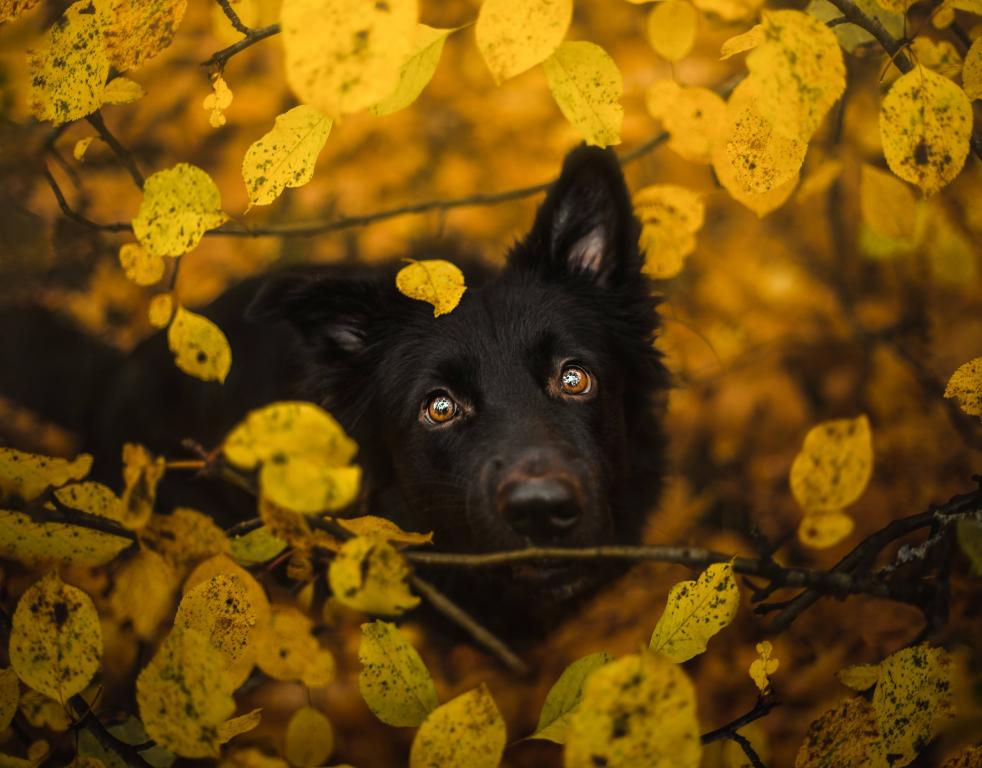News
Orchard Vet's Blog
Autumn Hazards for your Pets
22/09/2022

As the seasons change so do the hazards to our pets – here are some things to look out for this autumn
Darker evenings
As the evenings get darker earlier you may want to consider LED collars, leads or harnesses for your dogs to ensure they can be seen in the dark. Cats are harder to spot by drivers, so make sure they have reflective collars or maybe even consider keeping them indoors during the darker hours.
Fireworks
Guy Fawkes Night may be an exciting event for us, but it can be particularly scary for our pets. Luckily, there are lots of things you can do to help your pets cope, such as creating them a cosy den, keeping cats indoors or talking to us about anxiety relief products. Call us today for more practical advice.
Halloween
Consider taking your dog for a walk early to avoid any spooky costumes, and make sure to keep chocolate away from dogs as it is highly toxic for them. Be mindful of pumpkin placement to avoid any accidents that could cause fire, and try to keep Halloween décor away from paws reach too. Provide a safe den away from the door so pets can retreat should trick or treaters come knocking on your door.
Conkers, Oaks and acorns
Ingestion of conkers can cause vomiting, diarrhoea and abdominal pain and sometimes intestinal blockages. Exposure to acorns in dogs is common in the autumn and winter. The toxic ingredient is thought to be tannic acid, which can cause damage to the liver and kidneys. Signs include vomiting, diarrhoea, abdominal pain and lethargy. Ingested acorns can also cause an intestinal blockage.
Rat poisons
One-off exposure to products bought in garden centres often does not cause problems. However, repeated exposure to products or exposure to professional rodent baits can cause disruption to a dog’s blood clotting ability and result in massive haemorrhage (bleeding). The effects may be delayed for several days with blood-clotting tests needed to determine if a dog is at risk of developing problems. Treatment involves giving an antidote and in severe cases transfusions of plasma or whole blood.
Luminous necklaces and glow sticks
Ingestion of the chemical mixture within luminous jewellery and glow sticks can cause dribbling, frothing and foaming at the mouth, vomiting and stomach pain. Thankfully, although the signs can look dramatic, ingestion is unlikely to cause significant problems.
Fallen leaves
Piles of leaves can develop bacteria and mould. If your dog ingests these it can lead to gastrointestinal upsets.
Antifreeze
Antifreeze contains Ethylene glycol ingestion which is a sweet tasting chemical that can cause fatal damage if ingested. The first signs of intoxication may be that your pet appears ‘drunk’. If you believe that your pet has ingested antifreeze call us immediately as the prognosis becomes less good the longer the delay between ingestion and initiation of treatment.
Chocolate
Chocolate contains a stimulant called theobromine which is poisonous to dogs. The amount of theobromine differs depending on the type of chocolate — dark chocolate has the most in it. Theobromine mainly affects the heart, central nervous system and kidneys. Signs will occur from 4-24 hours following ingestion and you may see vomiting, diarrhoea, restlessness, hyperactivity, rapid breathing, muscle tension, lack of coordination, increased heart rate and seizures. Call us straight away if you think your dog has eaten chocolate.
